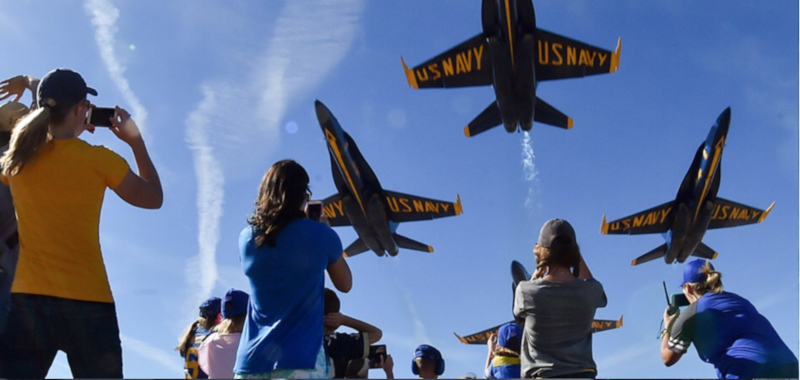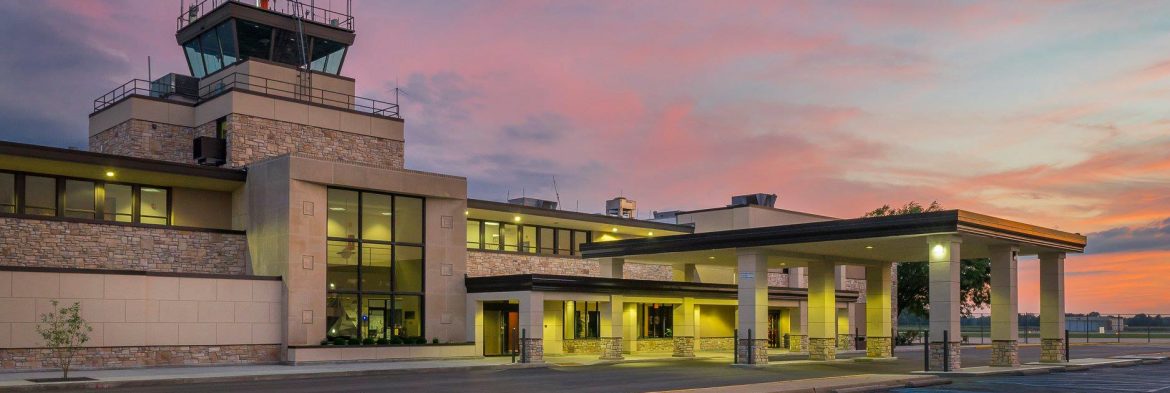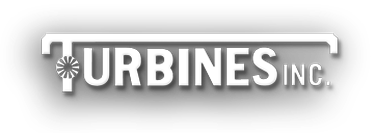The Terre Haute Regional Airport
The best is yet to come
Business View Magazine interviews Jeff Hauser, Executive Director of the Terre Haute Regional Airport, as part of our series on U.S. regional airports.
The Terre Haute Regional Airport is a public-use airport, six miles east of Terre Haute, in Vigo County, Indiana. Originally called Hulman Field, the Airport dates to 1943, when ground was broken on a 638-acre site donated to the City of Terre Haute by local businessman, Anton “Tony” Hulman, Jr., who also bought the Indianapolis Motor Speedway in 1945 and brought racing back to the race course after a four-year hiatus following World War II. The new airport was meant to replace the city’s first facility, Cox Field, which was built just a year before, but was denied transcontinental service by the federal government because it was too small.

When Hulman Field opened in 1944, its three runways quickly drew commercial traffic. First aboard was TWA with cargo and passenger service. In 1946, the U.S. Weather Bureau transferred its facilities to Hulman from Cox, as did the Civil Aeronautics Administration (today, the Federal Aviation Authority). In the early 1950s, a second airline, Delta C&S, began service, but was subsequently replaced by Lake Central Airlines in 1954. In 1953, a new terminal and control tower were completed and the Airport’s apron was expanded. In addition, its main Runway 5/23 was extended to 7,000 feet. In 1954, the Indiana Air National Guard established a base at the Airport for its 113th Tactical Fighter Squadron, which is a part of the 181st Tactical Fighter Group.
In the early 1960s, significant improvement projects were completed at the Airport. In 1961, an instrument landing system (ILS) was commissioned, and in 1962 Runway 5/23 was extended to 9,025 feet, making it the fourth longest runway in the state. Lake Central became the Airport’s main carrier in 1965, when TWA departed. Britt Airlines, operating as Allegheny Commuter, began serving the Airport in 1973 and based its headquarters there. In 1976, the City of Terre Haute and Vigo County formed an Airport Authority to manage the Airport’s operations. The FAA added advanced radar control systems and the terminal building were expanded by 1,500 square feet in 1977. Another addition to the terminal building added 5,300 more square feet, and Hulman Field’s name was changed to Hulman Regional Airport in 1981.
In 1998, the Airport’s name was changed again; this time from Hulman Regional Airport to Terre Haute International Airport – Hulman Field. The Airport’s secondary runway, 14/32, was extended to 7,200 feet in 1999. Airline service was provided by Great Lakes Aviation, Ltd. doing business as United Express, from 1995 through the summer of 1999. Today, there is no scheduled commercial service at Terre Haute International.
In 2005, the Base Realignment and Closure commission mandated the end of the flying era at the Air National Guard Base. On September 8, 2007, the 181st Fighter Wing flew its last training mission, and on May 3, 2008, it was re-designated as the 181st Intelligence Wing. Today, The U.S. Air Force uses Hulman Field for worldwide command and control of remote control surveillance aircraft. In addition, Indiana State University uses the Airport for its aviation programs.
Other Airport tenants include its FBO, Hoosier Aviation, which provides fuel, weather planning resources, tie-downs and hangar space, rental aircraft, and flight training. Williams Aviation provides airplane maintenance and inspections, and Turbines Inc. specializes in PT6A engine repair, including overhauls, plus hot section inspections, prop strikes, and power section repair.
Terre Haute Regional is also home to just under 100 general aviation aircraft, and its Executive Director, Jeff Hauser, says that three new 60×60 box hangars that the Airport recently constructed are starting to draw tenants, so he thinks he’ll hit that 100 mark within a year, especially since three more box hangars are slated for construction, soon. “We had folks start moving into the first three and then the second three should be done by late spring,” he reports. “More individuals are bringing planes to the Airport now; we had an individual from out of state; we had some from other airports. The new hangars have helped. Being the larger box hangars, some people can put up to three aircraft in one hangar, depending on their size. So, some or our tenants who were paying for a couple of T-hangars can now put them in one hangar.”

Another recent project took out the Airport’s third runway, 18/36, and replaced it with a new taxiway. “It had what the FAA calls ‘hot spots,’” says Hauser. “So, we decided to take out that runway and put in a long taxiway because we already have two nice runways. It’s for the west quad folks to make it easier for them to get to the primary runways. We’re getting ready to start a new apron project, which is really just a rehab of part of our ramp/apron area, next year. We have over a million square feet of ramp, so we need to take care of that and make sure it stays in good condition.”
An ongoing project for Hauser is marketing the Airport to potential businesses. About 250 acres of Airport property has been designated as “Aerotech Park,” and is within both an Airport Development Zone and a Foreign Trade Zone, enabling companies to leverage incentives that allow them to compete nationally and internationally. Examples of industries that the Airport could accommodate include, but are not limited to, corporate flight departments, aircraft maintenance repair and overhaul facilities, light industrial, manufacturing, and warehouse distribution.
Hauser believes that because it sits right off of I-70, which goes directly to business/industrial park on the south side of Terre Haute, the Airport is perfectly located for a logistics operation. Aerotech Park also capitalizes on Indiana’s robust infrastructure, which includes: 41 freight railroads; 14 interstates including I-70, I-74, I-69, I-65, and I-80; and three ports within 120 miles, all accessible by rail. “Also, we’re very centrally located,” Hauser adds. “We’re within 200 miles of Louisville, Cincinnati, Chicago, St. Louis, and Nashville, with very long runways and a lot of ramp spaces. And we’re easy to get in and out of.”
A new Airport Gateway Development Plan aims to develop the Airport’s east side because of its proximity to the State Road 46/U.S. Highway 40 corridor. This past November, the Airport Authority hired airport consultant, Newhouse & Associates, to review commercial development of the corridor. “The east side is starting to grow quickly,” says Hauser. “It was just announced that a new casino, an affiliation of Hard Rock, is going in, next year, and it’s almost at the end or our runway. So, we’re starting to get a lot of interest on this side, which generates more economic development for the Airport area.”
The challenge for the Airport, as it actively solicits new tenants, is having enough places to put them. “We need more buildings to bring more people in. We are so full, right now, and it takes so long to get the infrastructure built,” Hauser laments. “We have to have a plan about how we’re going to get our structures and buildings up in quick time. Most businesses, today, want to know about your workforce and if you have an existing building, or how quick you can get one up. So, we’re working on those areas.”
The Terre Haute International Airport has been a regional landmark for nearly 80 years, and in 2017, it was named the Indiana Airport of the Year. But Jeff Hauser believes that its best years are yet to come.
AT A GLANCE
WHO: The Terre Haute Regional Airport
WHAT: A civil-military, public-use airport
WHERE: Six miles east of Terre Haute, Indiana
WEBSITE: www.huf.com







